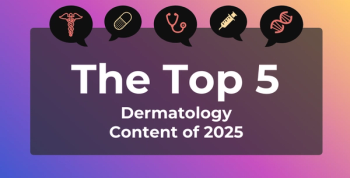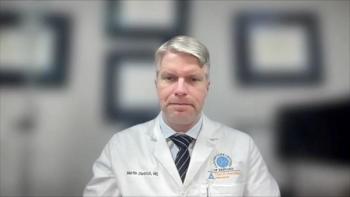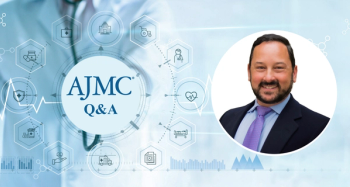
CD47 Antibody With Rituximab Produces Durable Response in R/R Lymphoma
When used in combination with rituximab, Hu5F9-G4 (5F9), a humanized monoclonal anti-CD47 antibody, promotes durable objective and complete response rates in lymphoma while also having minimal adverse events (AE), according to a phase 1b study published in New England Journal of Medicine.
When used in combination with rituximab, Hu5F9-G4 (5F9), a humanized monoclonal anti-CD47 antibody, promotes durable objective and complete response rates in lymphoma while also having minimal adverse events (AE), according to a phase 1b study
Treatment for B-cell non-Hodgkin lymphoma mainly depends on anti-CD20 antibodies (eg rituximab), but prognosis after a patient with diffuse large B-cell lymphoma (DLBCL) becomes refractory to rituximab is extremely poor, with an estimated overall survival of 6 months. In these patients with refractory disease, the development of new adjunct therapies to anti-CD20 antibodies is crucial and lifesaving.
CD47 is an antiphagocytic signal that is overexpressed on cancer cells to promote immune evasion. The use of anti-CD47 antibodies, such as 5F9, have led to increased T-cell response and phagocytosis of these tumor cells. Not only does 5F9 selectively target the prophagocytic signals expressed only on tumor cells, but it also works synergistically with rituximab because rituximab provides a potent prophagocytic signal. In the phase 1b study, the investigators administered rituximab with 5F9 to patients with relapsed or refractory non-Hodgkin lymphoma to determine safety and efficacy, as well as an appropriate phase 2 dose.
Twenty-two patients with relapsed or refractory DLBCL or follicular lymphoma were enrolled. The median number of previous lines of therapy was 4, with 21 patients (95%) refractory to rituximab. Rituximab with 5F9 was found to be relatively safe, with most AEs being grade 1 and 2. Common AEs found were chills (41%), headache (41%), anemia (41%), and infusion-related reaction (36%). Throughout the study, 3 dose-limiting toxicities occurred: grade 3 pulmonary embolism, grade 4 neutropenia, and grade 3 idiopathic thrombocytopenia purpura. All 3 patients had a resolution of their AE—only the patient with idiopathic thrombocytopenia purpura discontinued treatment.
The maximum dose that was established from the three cohorts was 5F9 30 mg/kg weekly. A 1-mg/kg priming dose administered one week in advance allows the elimination of aging red cells while also sparing younger red cells to lessen the effect of anemia. This method of administration achieved a near 100% CD47-receptor occupancy. In the intention-to-treat analysis, 50% of patients had an objective response rate, and 36% had a complete response. Of the 15 patients with DLBCL, 6 patients (40%) had a response, with 5 patients (33%) having a complete response; of the 7 patients with follicular lymphoma, 5 patients (71%) had a response, with 3 patients (43%) having a complete response. Median time to response was 1.7 months and mean duration of response was not reached.
Results from this phase 1b study have exposed promising results for the combination of anti-CD47 antibody 5F9 with rituximab in patients who are refractory or relapse to anti-CD20 therapy. Larger population data from phase 2 trials will be needed to verify these results.
Reference
Advani R, Flinn I, Popplewell L, et al. CD47 blockade by Hu5F9-G4 and rituximab in non-Hodgkin’s lymphoma. N Engl J Med. 2018;379(18):1711-1721. doi: 10.1056/NEJMoa1807315.
Newsletter
Stay ahead of policy, cost, and value—subscribe to AJMC for expert insights at the intersection of clinical care and health economics.








